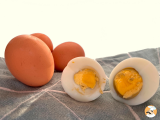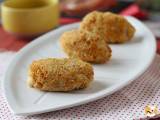The perfect fried egg: secrets and tips from Spain for a foolproof recipe

The fried egg is one of the most beloved and representative preparations of Spanish cuisine. In its apparent simplicity -an egg, hot oil and a frying pan- it contains tradition, technique and a lot of flavor. There is no home in which it has not been served with potatoes, as a quick, comforting or even festive dish.
Iconic recipes such as the starred eggs of Casa Lucio have made it a symbol of the local cuisine. In the south, it is an essential part of a good Alpujarreño dish; in the north, it is a natural accompaniment to garlic eels. Its versatility and character have made it indispensable in our kitchens.
But frying a perfect egg, with its curdled white, golden tip and semi-liquid yolk, requires precision and good judgment. What secrets do cooking schools teach? What do chefs recommend? In this article we have compiled the most reliable tips so that you can do it at home with restaurant-quality results.
The choice of egg
The quality of the egg is fundamental. It is recommended to use fresh eggs, preferably organic or free-range, identified with codes "0" and "1" respectively. Freshness can be checked by observing that the yolk is raised and the white is compact. According to chef José Andrés, a fresh egg guarantees an egg white that adequately envelops the yolk during cooking, resulting in an optimal texture.
Type of oil and quantity
Extra virgin olive oil is the favorite choice in Spanish cuisine for frying eggs, due to its flavor and resistance to high temperatures. The amount should be generous, allowing the egg to float slightly.
The right frying pan
A medium-sized nonstick frying pan (8-9.5 inches/20-24 cm) is ideal for controlling the cooking and facilitating the handling of the egg. It is important that the pan is very hot before adding the oil and egg to prevent sticking and ensure even cooking.
Firing technique
For a perfect fried egg, three elements must be controlled: temperature, pouring and watering:
- Pouring: It is recommended to crack the egg in a bowl, not on the pan, to avoid breakage and facilitate a smooth incorporation.
- Temperature: The ideal temperature is around 320°F-340°F/160°C-170 °C. Martín Berasategui suggests a trick to check if the oil is ready: introduce a crumb of bread; if it browns quickly, it is time to add the egg.
- Watering: With the oil very hot, the egg is poured in carefully, preferably to one side, allowing the white to expand. Then the watering technique begins: with a spoon or skimmer, scoop up the oil and pour it over the top of the egg to set the white without turning it over.
The yolk should remain semi-liquid, covered by a thin opaque film that protects it without cooking it completely. The oil can be directed towards the edges to form the classic golden, crunchy and tasty dot.
Beware of splashes
Frying with hot oil can cause splattering, especially if the egg is wet. A trick widely used by Karlos Arguiñano is to add a pinch of salt to the oil before adding the egg: this reduces the risk, since the salt absorbs part of the steam. A pinch of flour can also be used for the same purpose.
Pouring the egg from a small bowl and at a low height helps to control the process, and using a pan with high edges offers greater safety during basting with hot oil.
You may also be interested in:
 Patricia González
Patricia González
